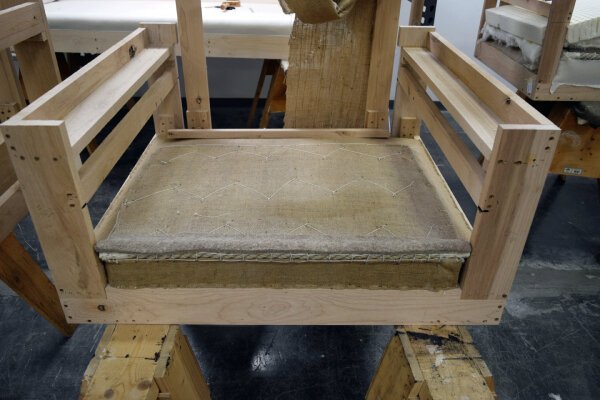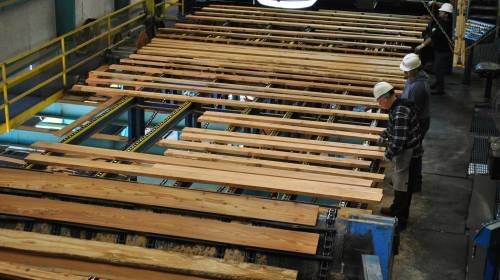HOW TO CREATE A | VOCS-FREE ENVIRONMENT
HOW TO CREATE A VOCS-FREE ENVIRONMENT
In our first Sustainability Series post, we introduced volatile organic compounds, or VOCs. These are compounds that release toxic gasses (called off-gassing) into the air we breathe. VOCs are widely present in common household furnishings and materials.
For our fourth post, we’re exploring some actionable ways to avoid VOCs in your home and replace them with safer, friendlier options.
WHERE ARE VOCS FOUND IN A HOME?
Many common products and building materials release VOCs, including wet-applied materials (like paint), composite wood products, chemically processed fabrics and plastics, as well as metal finishes.
On a molecular level, several household products can also undergo chemical degradation and abrasion caused by aging, light, heat, water, and long-term use. This can form new compounds and release further harmful substances into our environments. For example, the breakdown of plastics when exposed to sunlight or metal dust from worn surfaces.
Here’s a quick look, by material, of the products that are worth avoiding or replacing...
FABRIC
Synthetic fabrics are one of the biggest offenders when it comes to VOCs. Petroleum-based polyester and vinyl (polyvinyl chloride, or PVC) are two examples that are widespread among household fabrics and upholstery. They release the harmful toxin dioxin.
Instead, choose natural fabrics, such as organic cotton and recycled plastic polyester. The simplest way to discover VOC-free fabrics is to look for the quality certifications awarded by reputable third party organizations.
Certifications to look for: Global Organic Textile Standard (GOTS) or Oeko-Tex
Medley uses organic cotton and wool, recycled fabrics, reclaimed wood, and all-natural latex.
CUSHIONS
Cushions are another place to look out for VOCs in your home. Polyurethane foam, commonly found in the seating of sofas and chairs, looks harmless but is actually comprised of the carcinogenic chemicals methyloxirane and toluene. (No thanks!)
Natural latex is a much friendlier option for cushions and seating. Pair it with reclaimed metal springs and organic batting made from wool or cotton, and your whole cushion will be VOC-free.
Certifications to look for: Global Organic Latex Standard (GOLS)
(source)
LEATHER
Aside from the obvious animal impact, the tanning and dying involved in leather production uses several toxic chemicals, including chromium. There are toxin-free alternatives, such as vegetable tanning, but the end product does take some breaking in.
Certifications to look for: Oeko-Tex or Naturtextil IVN
WOODS & METALS
Woods and metals are a great option for a VOC-free home when unfinished or finished with non-toxic compounds. Some finishes, like petroleum based wood stains or chrome-finishes metals, come with highly toxicity and off-gassing.
Greener wood finishes include water-based options, milk paint, and natural oil-based paints, such as those made from linseed oil or tung.
Certifications to look for: Forest Stewardship Council (FSC)
The Forest Stewardship Council sets the standard for forest protection and sustainable harvesting (source)
PAINT & FURNITURE GLUE
I think we’ve all experienced the headache-inducing scents of glue and paint at some time in our lives. We intuitively know it can’t be good for us, and we’re right. Even though we can’t smell the fumes when the paint or glue is dry, they release harmful VOCs over time.
To keep your home VOC-free, look for paints labeled “non-toxic” or “natural.” These can include water-based paints and glues, along with milk paint, plant-based paints, and mineral-based paints.
Certification to look for: Greenguard
(source)
BRANDS
Eco Balanza furniture meets the highest standards for products that are VOC-free, sustainably sourced, and high-quality.
Haiku Designs uses FSC certified wood, GOLS certified organic latex, and GOTS certified organic cotton.
You can also use Greenguard’s database to find home products and suppliers committed to low harmful emissions.
So, what do you think? Do you feel more equipped to eliminate VOCs from your home?
References:
https://healthymaterialslab.org/why-healthy-materials
https://ecocult.com/ultimate-guide-eco-friendly-ethical-furniture/
https://www.rockler.com/green-finishing-green-finish
https://www.thespruce.com/low-voc-paint-and-no-voc-paint-1976533




